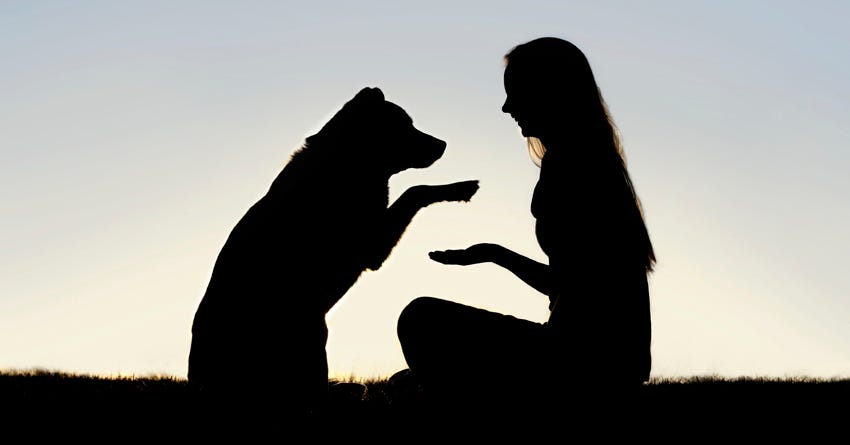7 Tips for Successful Clicker Training

One of the hardest parts of dog training is developing the timing to communicate clearly with your dog.
A clicker, however, can make your communication better. A clicker is a small training tool that works by making a small 'clicking' sound when you press and release a metal tab. This is particularly useful for immediately marking (or bringing to your dog's attention) actions you like. For example, when your dog sits to greet you rather than jumping up on you, you can click when he sits, showing him you approve of that wonderful sit. Here are some tips to help you with clicker training.
Introduce the Clicker
There is nothing special about that clicking sound until you teach your dog that it's special. This is called, 'charging the clicker.' Have some small pieces of good treats in hand that you know your dog enjoys. Press and release the metal tab on the clicker so it makes a sound then immediately give your dog a treat. Do this a half a dozen times and stop. Later, repeat it another half a dozen times and stop. After a couple of days of this repetition, go on to the next training step. During this time, make sure to use low calorie treats like The Honest Kitchen's Training Treats so that you can treat a lot without adding a lot of extra calories.
Capturing a Behavior
Clicker training is excellent for helping dog owners (or the owners of cats, horses, and other domestic animals) reinforce an action they would like to see their dog do again in the future. This is called 'capturing a behavior.' When your dog does something you like, click the clicker and give your dog a treat. This means for a while carry the clicker in one pocket and treats in the other. When your dog walks past the kitchen trash can without sniffing it, for example, let your dog know you approve of this with a click and a treat.
Using the Clicker Other Ways
Although capturing a behavior is a wonderful training technique well suited to clicker training, it's not the only technique where the clicker is useful. If you use a lure and reward training method, you can still use a clicker. When the dog follows the lure to perform an action, click to say, "That's it!" and pop the treat used as a lure in his mouth. If you shape your dog into a position (such as a sit) the click and treat can reward that, also. Be inventive and experiment a little and see where the clicker can work for you and your dog.
Add a Vocabulary Word
When you have clicked and rewarded an action several times, and in those situations where your dog is reliably repeating that action, then it's time to add a vocabulary word. Watch your dog and as he is about to do this action (sit for example), say, "Sweetie, sit," just as he's about to sit. Don't say it ahead of time as he doesn't know what it means yet; say it as he's about to do it on his own. As he sits, click and give him a treat.
A Jackpot is Powerful
When you go to Las Vegas and play the slot machines, if you hit a jackpot and get a big reward, that's exciting, isn't it? The same thing works for your dog. If your dog is having trouble with a particular exercise or action, and then suddenly understands, click and give him a handful of treats. Praise him, pet him, and let him know he's the best dog in the world. This jackpot of rewards is a powerful tool so don't use it every time he does something right. Instead, save it for special moments.
Make the Reward Variable
Once your dog understands the word association with an action, such as sit, and is doing it well, then it's time to move to the next training step. When your dog does the action as asked, praise him after each repetition, "Sweetie, awesome!" Click and treat every third, fourth, or fifth time, however, rather than each and every time. This variable reinforcement, just like playing the slots in Las Vegas, makes your dog try harder.
The Clicker is Not a Remote Control
Far too many dog owners who use a clicker treat it as a remote control. They point it at their dog and click away, hoping the clicker makes the dog do what they want. The sole purpose of the clicker is to immediately and clearly communicate to your dog, "At this moment the action you just did is correct." As you and your dog get better with clicker training, and as your dog learns more skills, be more particular about what you reward. Click and treat the fastest come, the quickest sit, the best presentation of a trick. Clicker training is fun.


